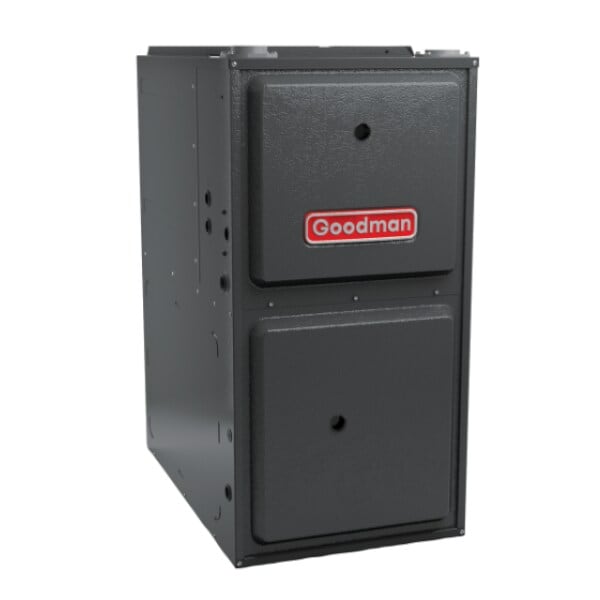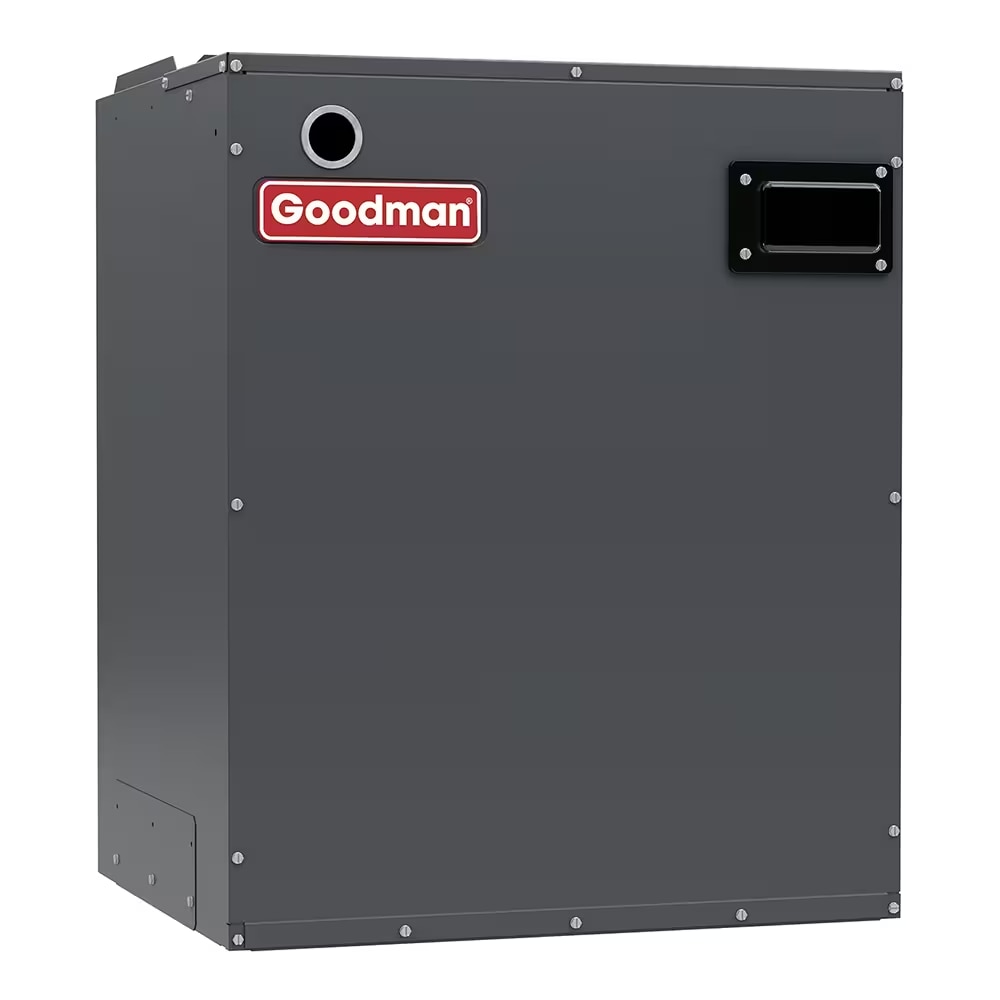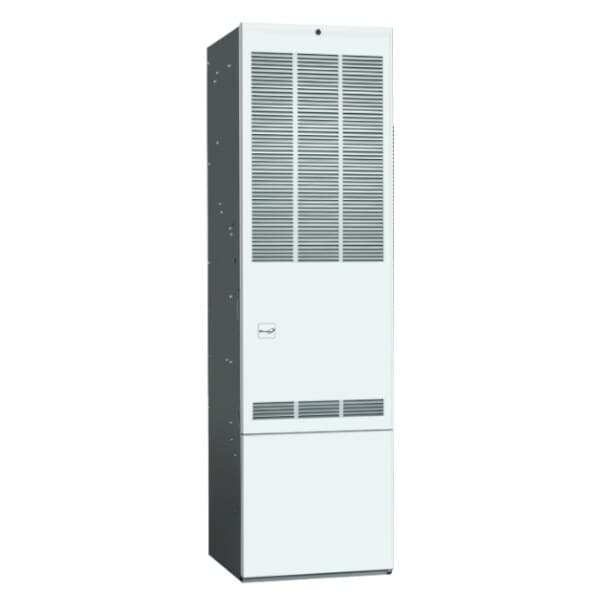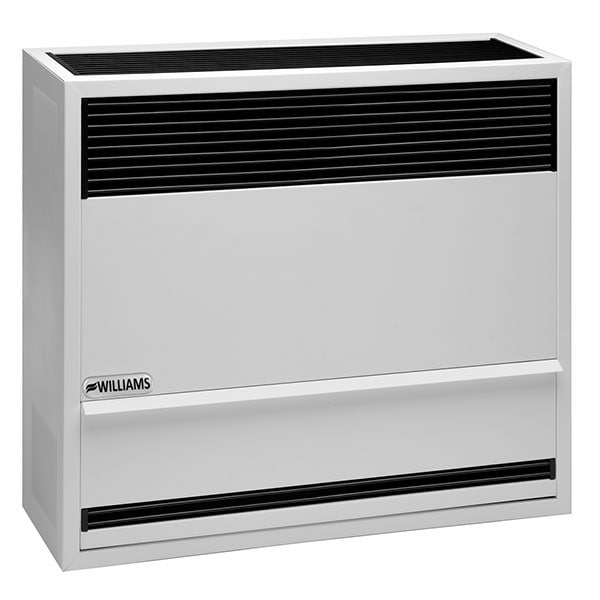
The Best Furnaces of 2025
Top Rated and Expert Recommended Furnaces
When it comes to staying warm, you don't want to mess around. Forced air furnaces are among the most common heating systems and, although you might think they're pretty straightforward, there are many factors to consider when choosing the best one.
I've done the heavy lifting for you and am proudly recommending the best furnaces of 2025. Please spend some time reading through each of our picks. Remember to also check out my best furnace selection criteria.
The Best Furnaces
| Best Furnace for Homes | Best Electric Furnace | Best Mobile Home Furnaces | Best Furnace for Cabins |
|---|---|---|---|
|
|
|
|
|
Best Furnace for Homes: Goodman

Goodman gas furnaces are the gold standard for heating your home. For one, they are the only brand with furnace models offering up to nine-speed fans. Typical furnace fans don't go beyond three speeds, and many offer only one—or two-speed. A nine-speed fan provides unmatched comfort because it'll distribute heat much faster to quickly warm your chilly house. Goodman also offers variable-speed models. Another boost to comfort is Goodman's use of multi-speed ECM motors that use the lowest speed possible to deliver precise temperature control.
Goodman furnaces are also very efficient, with the highest-rated models rated at 97% AFUE. Condensing technology, which uses a secondary heat exchanger to extract additional heat from the exhaust gases, plays the main role in boosting efficiency because the extra heat it collects can be used for your home. Goodman also offers models with modulating burner technology that will ramp up or down the heat depending on demand. That way, you're only using the exact amount of heat you need at any given time.
Goodman furnaces are compatible with all types of thermostats, and certain models include smart ComfortBridge technology that monitors and optimizes performance to provide consistent energy-efficient comfort. They are also built to last with a reliable heavy-duty tubular heat exchanger and durable steel cabinet rated for less than two percent air leakage.
The warranty provides excellent 10-year limited coverage on parts and unit replacement, plus lifetime limited coverage for the heat exchanger when you register within 60 days of installation. The price will depend on the model and BTUs, but I assure you that you'll get your money's worth with Goodman.
| Comfort |
| - 9-speed blower fan available for fast heat distribution - Variable speed is also available - Modulating burners available - Quiet performance |
| Efficiency |
| - Rated up to 97% AFUE - Uses Condensing Technology - Multi-speed ECM motor |
| Design |
| - Heavy-duty tubular heat exchanger - Aluminized steel construction - Steel cabinet |
| Controls |
| - Compatible with all thermostats - Includes ComfortBridge technology - Self-monitors for errors |
| Warranty* |
| - 10-year limited coverage for parts - 10-year 10-year limited coverage on unit replacement - Limited lifetime coverage for heat exchanger *When registered within 60 days of installation |
| Overall Value |
| The gold standard for home furnaces. Excellent value for the money |
Special Notice: Recent EPA regulations changed the type of refrigerants that can be used inside heating and cooling systems. For Goodman products, R-32 is replacing 4-10A refrigerant. New R-32 furnaces are backward-compatible with systems running on R-410A refrigerant. For safety reasons, older 410-A furnaces require a conversion kit to work with systems running on new R-32 refrigerant.
Who It's For:
- All homeowners needing a ducted heating system
- Those who require gas or liquid propane as their fuel source
- Those seeking a furnace brand with a wide unit selection
Who It's Not For:
- Those without existing ductwork in their space
- Those who require oil as their fuel source
- Mobile homeowners
Best Electric Furnace: Goodman
Just like with gas, Goodman stands out as having the best electric furnaces for home heating. Now, when people say, "electric furnace," it's a bit of a misnomer because no fuel is being burned. A Goodman electric furnace is a modular blower with an electric heating element inside. This element uses electricity to provide the heat that the fan blows through your ductwork. The element has multi-stage capabilities, meaning it can ramp the heat up or down depending on need.
Depending on the model, Goodman electric blowers offer nine fan speeds just like their gas counterparts, so they'll distribute heat quickly. Those with advanced variable speed blower motors provide ideal airflow and comfort by scaling to the unique demands and challenges of your home. They are also multidirectional and can be configured easily for upflow, downflow, and horizontal airflow applications. Durability is a given with an embossed cabinet and foil-faced insulation to reduce noise and condensation levels.
Compatible with all thermostats, Goodman electric furnaces also include ComfortBridge technology that monitors and optimizes performance to provide consistent energy-efficient comfort, along with diagnostics and troubleshooting. To top it off, you'll get a 10-year limited warranty on parts to protect your investment. It's a great overall value, especially considering these units can double as air conditioners in the summer if you purchase the correct cooling coil separately.
| Comfort |
| - 9-speed blower fan available for fast heat distribution - Variable speed is also available - Quiet performance |
| Efficiency |
| - High-efficiency, variable-speed ECM motor provides ideal airflow - Multi-stage heating elements - 100% efficiency due to electricity |
| Design |
| - Modular design - Can be configured for upflow, downflow, and horizontal airflow - Embossed cabinet for durability - Foil-faced insulation - Can accommodate any size Goodman heating element |
| Controls |
| - Compatible with all thermostats - Includes ComfortBridge technology - Self-monitors for errors |
| Warranty |
| -10-year limited coverage for parts *When registered within 60 days of installation |
| Overall Value |
| A great value for efficient, comfortable heat. Plus can double as AC. |
Who It's For:
- Those without access to natural gas or propane
- Those in areas where heat is needed only occasionally
Who It's Not For:
- Those without existing ductwork in their space
- Those living in areas with high electrical costs
- Mobile homeowners
Best Mobile Home Furnace: Revolv Furnaces
If you're looking for a comfortable heating solution for a mobile or manufactured home, look no further than a Revolv furnace. Gas and electric models are available, and both are designed specifically for the tight spaces found in mobile homes. Both are compatible with any 24-volt thermostat.
The gas mobile home furnaces from Revolv provide up to a 95% AFUE rating, depending on the model, so you can count on efficient performance. What's more, these furnaces feature high-efficiency ECM blower motors that save significant energy over more traditional PSC motors. To avoid cold blasts, the blower kicks on 30 seconds after the burner to allow time for the system to warm up.
The electric Revolv furnaces include an efficient blower motor that uses the lowest speed it can to deliver precise temperature control for your home and lower energy costs. They are also multi-positional and can be installed in both upflow and downflow configurations. Nichrome electric heating elements provide long-lasting, efficient heating.
Revolv backs up its furnaces with a 2-year parts warranty, so you can have peace of mind with your purchase. Overall, Revolv specializes in mobile home heating, which means you can trust that they're focused on creating the best solution possible. That's one of the major reasons I recommend them for these applications.
| Comfort |
| - Will quickly heat up a mobile or manufactured home with its multispeed blower - Delayed blower start avoids cold blasts |
| Efficiency |
| - Rated up to 95% AFUE for condensing gas models - Efficient ECM blower - Efficient nichrome heating elements on electric models - Fully insulated cabinet |
| Design |
| - Tubular primary heat exchanger - Multipositional electric models for upflow & downflow configurations |
| Controls |
| - Works with any 24-volt thermostat or millivolt thermostat |
| Warranty |
| - 2-year coverage for parts |
| Overall Value |
| Highly efficient solution for mobile home heating that no other brand can beat. |
Who It's For:
- Mobile or manufactured homeowners
- Those who want a direct replacement of their existing mobile home furnace
Who It's Not For:
- Single-family homeowners
Best Furnace for Cabins: Williams Gas Furnaces
For cabins, cottages, lake houses, and other seasonal dwellings, you need a furnace that provides reliable comfort without making a large footprint. Williams gas furnaces meet this need perfectly. They have slim designs that'll blend into your space. Some can even be recessed into the wall.
Another thing I love about these furnaces is that many don't require any electricity because they're compatible with millivolt thermostats. Unlike modern 24-volt thermostats, millivolt models are powered by a small voltage generated by the heating system itself. This is perfect for remote areas that may have tenuous power. If you do decide you want a 24-volt thermostat, you still can, but you will be vulnerable to power outages.
Although Williams furnaces aren't as efficient as the other units on this list, that's fine for seasonal dwellings since you're not going to be there year-round. However, one efficiency benefit Williams furnaces do provide is excellent heat retention due in part to their being direct vented. Rather than pull air from the surrounding indoor space, many direct-vented furnaces pull air directly from the outdoors and keep the heated air inside where it belongs. Other models feature a counterflow blower that takes air from the ceiling and blows it toward the floor where you are.
A one-year parts and limited 10-year heat exchanger warranty will protect your Williams furnace investment. Overall, you'll get excellent heat for your cabin at a very fair price.
| Comfort |
| - Provides excellent heat retention - Counterflow blower on some systems blows warm air toward floor - Somewhat noisy |
| Efficiency |
| - Direct venting pulls air from outside and prevents backfeeding of heat |
| Design |
| - Slim, space-saving construction - Mounts directly on outside-facing wall - No electricity is needed for operation |
| Controls |
| - Works with any 24-volt thermostat or millivolt thermostat |
| Warranty |
| - Limited 1-year coverage on parts - Limited 10 years coverage on heat exchanger |
| Overall Value |
| Fantastic comfort and space-saving design makes these perfect for their application. |
Who It's For:
- Cabin or seasonal homeowners
- Those who need moderate heating for their main home
Who It's Not For:
- Those who have exhaust venting restrictions
- Mobile or manufactured homeowners
How We Picked the Best Furnaces
When selecting the best furnaces, we take six main criteria into account: Comfort, efficiency, design, controls, warranty, and overall value. However, not all criteria always have equal weight. For example, the best furnace for cabins is not very efficient, but it doesn't need to be because you likely aren't spending months at a time using it.
Comfort
The purpose of any furnace system is to keep you warm and comfortable when it's cold out. Period. Although everyone has different levels of comfort, the best furnaces can meet the needs of whoever is using them.
For gas furnaces, one aspect to look at is the fan speed. The ability to switch from low to high fan speeds enables the furnace to meet each user's individual temperature preferences. For example, while a high fan speed will quickly heat a space up, it may cause an uneven or uncomfortable temperature for some. On the other hand, a low fan speed provides a more consistent temperature but will take longer to warm a space up. The more speeds a furnace can provide between these two extremes, the more flexibility you have.
Another factor influencing comfort is how well a furnace can modulate heat production. The goal is to have just enough heat to comfortably heat your space. No more, no less.
Comfort is not limited to fan speed and heat modulation, however. Some furnaces we recommend won't necessarily have multiple fan speeds or the ability to modulate, but they'll still be the best for certain applications, like remote spaces, due to their design. What's good for a cabin in the woods won't work for a house and vice versa.
Efficiency
Although comfort is king, it shouldn't break the bank. Efficiency is the other side of the coin. Gas furnace efficiency is measured by an Annual Fuel Utilization Efficiency (AFUE) percentage, which is calculated by dividing the amount of energy that is actually heating your space by the total energy contained in the fuel used by the furnace. The higher this percentage, the better.
Efficiency is impacted by factors such as motor type, heating modulation, and condensing technology. Certain states also require furnaces to limit the level of toxic nitrogen oxide they emit. High-efficiency furnaces tend to meet these low NOx requirements by premixing air and fuel and burning it on a lower flame.
When it comes to electric furnaces, they are all 100 percent efficient, but you want to make sure that the cost of electricity in your area is worth it. Other furnaces might be less efficient, but they are the best option for certain applications, like workshops or remote cabins. We take all of these caveats into account when making our recommendations.
Design
We examine how well a furnace is constructed, which includes durability factors like heat exchanger quality, cabinet design, and other details that ultimately impact lifespan. No use buying something that'll break in two years. Another aspect of the design is the furnace's physical footprint. Are there any space-saving benefits? Is it multi-positional for upflow, downflow, and horizontal configurations? The best furnaces can effectively adapt and fit into their chosen application.
Controls
The best furnace in the world is useless if it doesn't work with your thermostat. Our furnace selections are almost all compatible with any thermostat, and some even offer their own unique control options. Whether you have a non-programmable thermostat, a smart thermostat, or prefer using Bluetooth, you will find the furnace you need on our list.
Warranty
A furnace is a big investment that'll impact your comfort for years to come. You shouldn't need to take chances. That's why we place great emphasis on warranty coverage. Although rare, defects do happen, and you want to be covered by a generous warranty if they do. Keep in mind, though, that a professional installation is required to validate any warranty. So don't think about turning your furnace installation into a weekend job. Let the pros handle it.
Overall Value
Money isn't everything. The value of any furnace goes beyond the price tag and takes into account all of the above criteria-comfort, efficiency, controls, and warranty. Saving money on the cheapest furnace won't be any comfort when it fails prematurely and you're left in the cold. As the old saying goes, you get what you pay for.
Furnace FAQs
What is a Furnace?
A furnace is a heating system that uses combustion to heat a heat exchanger, which in turn heats the air that is blown into a space using a blower fan and, typically, ductwork. There are variations on this basic principle. For example, some furnaces only heat one room, in which case ductwork is not needed. Others are "electric furnaces," which technically don't qualify as furnaces because, instead of combustion, they use an electric heating element to provide the heat. Since they're popularly called electric furnaces, though, we do the same.
To learn everything you need to know about furnaces, visit our furnace buyer's guide.
What is a Furnace Filter?
As a furnace operates, it draws cold air into itself so that it can be heated by the heat exchanger. Unfortunately, indoor air is always filled with tiny particulates--dust, dander, dirt, etc. If these pollutants enter the heart of the furnace system, they could do damage. That's why we install furnace filters to capture these particles from the air before it enters the system. The particles stay trapped on the filter while the clean air passes through. Eventually, about every 60 days, you need to replace the furnace filter because it will be too full to function properly. Learn about our home furnace filter subscriptions.
Does the AC Use the Furnace?
A furnace and air conditioner run separately and don't need each other. A furnace uses a burner or electrical element to produce heat, while an air conditioner uses an evaporating coil and outdoor condenser to remove heat. However, if a furnace and air conditioner are combined in a split system, they will share some of the same components, particularly the blower fan and ductwork.
What is a 2-Stage Furnace?
In the context of furnaces, "staging" refers to how the burners are firing. In a single-stage furnace, the burners are either off or firing at 100 percent capacity, leading to less-consistent temperatures. A 2-stage furnace adds a low-fire burner setting. Low-fire operates at typically 40 - 60 percent of the rated capacity and will allow the furnace to better match a home's heating requirements in mild weather. Finally, a modulating furnace can operate at almost any burner output within a defined range, leading to the most consistent temperature and comfort. Learn more about furnace staging.
How Long Does a Furnace Last?
Like any other equipment, a furnace's lifespan depends on how well you maintain it. Change the filter every 60 to 90 days and get a professional to perform an annual inspection. With proper maintenance, a gas furnace should last up to 10 years without any part replacements and up to 20 years with some replacements. An electric furnace, since it has fewer things that can go wrong, should last at least 20 years.
About Ken
Ken DeJong has been a versatile handyman for decades, able to adapt to every home improvement challenge thrown his way. From working on cars in his youth, to installing carpet, and even doing decorative painting, Ken is a determined jack-of-all-trades. He served as a manager at Lowes before joining the Power Equipment Direct team.
Ken has amassed a wealth of product knowledge across various categories, especially when it comes to heating and cooling equipment. He has taken roughly 130 hours of professional training hosted by industry vendors and now trains others in his department. He’s particularly fascinated by ductless mini splits and the inverter technology that makes them exceptionally quiet and efficient.
When he's not helping customers choose the right evaporator coil or tankless water heater, Ken puts his creativity to use designing t-shirts and writing royalty-free instrumental music. To sum up, Ken is a professional who is obsessed with acquiring new skills and sharing his knowledge to help others optimize their home living.



